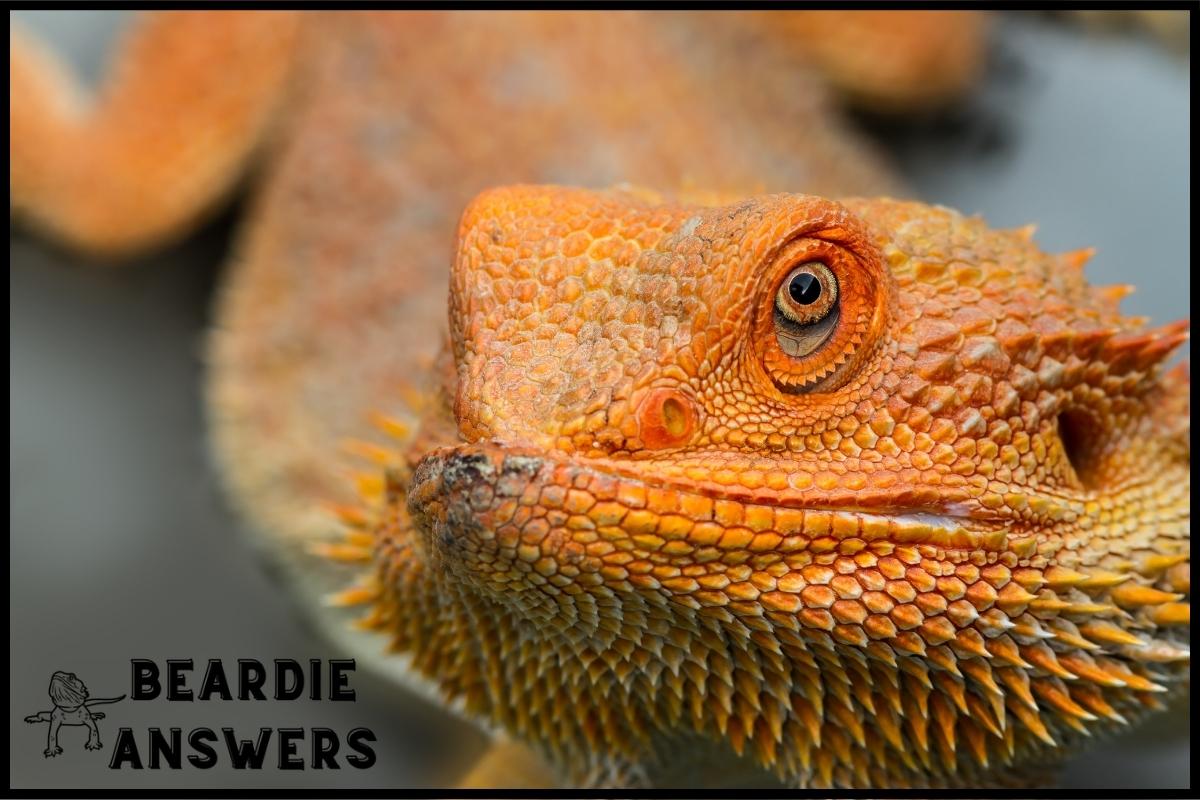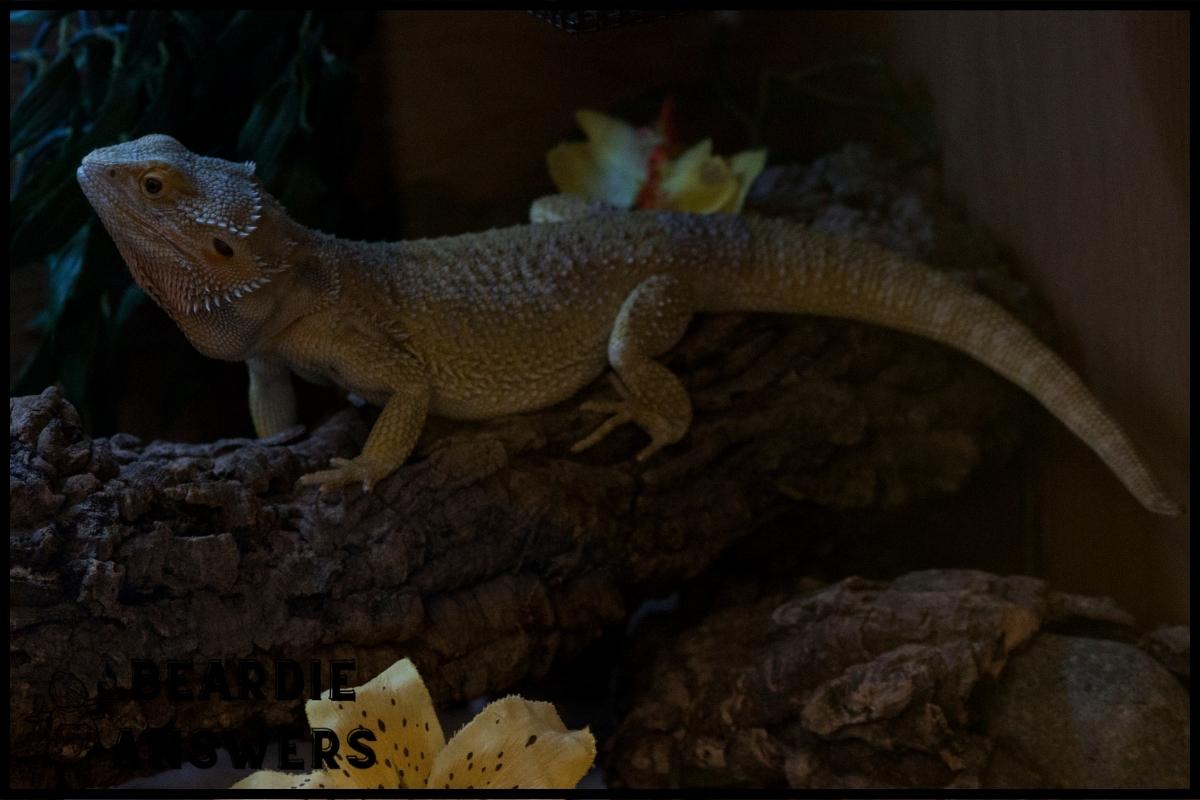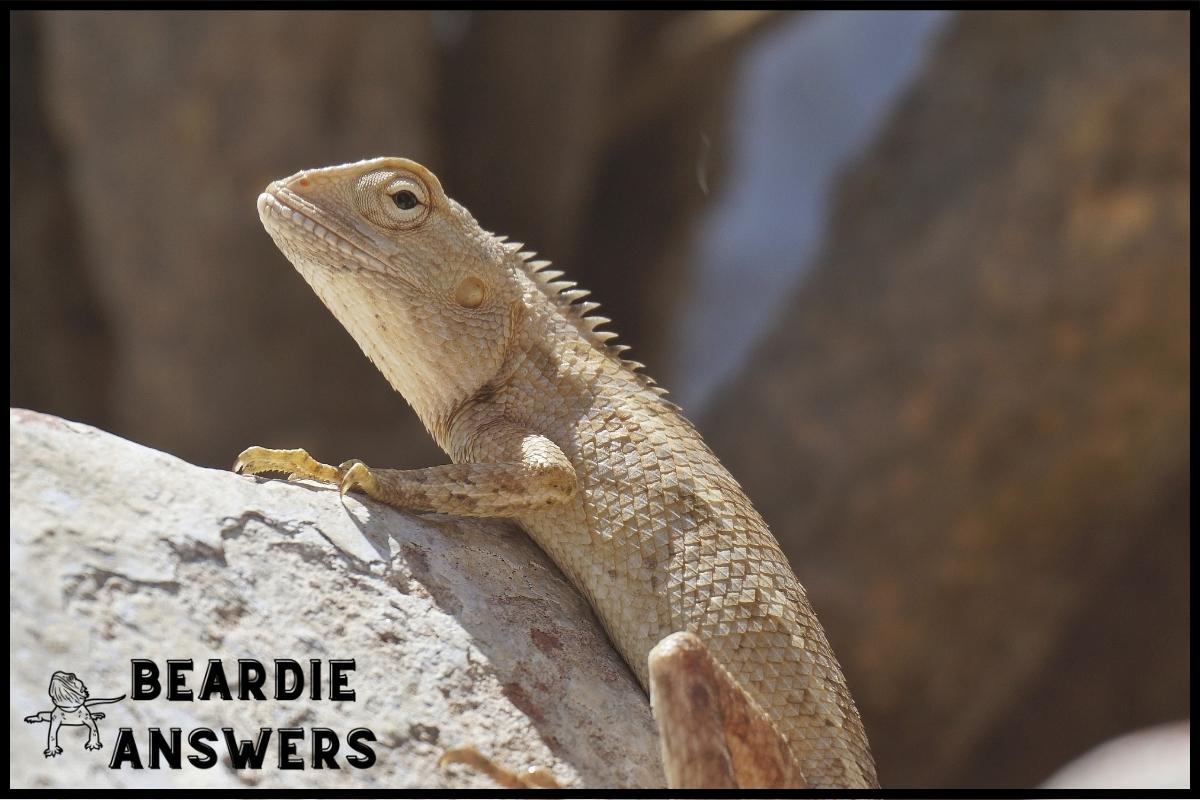[su_note note_color=”#eee”]
Bearded dragons can grow up to 2 feet in length, with males typically being slightly larger than females. It’s important to provide them with enough space to move around comfortably and a suitable diet to support their growth and overall health.Healthy nostrils are essential for bearded dragons as they rely heavily on their sense of smell to locate food, mates, and avoid predators. Clear nostrils indicate healthy respiratory function, and blockages or discharge can signal an infection or illness. Regular check-ups and proper husbandry can prevent these issues.[/su_note]
Bearded dragons are an increasingly popular pet, and their size is a key factor for many potential owners. Knowing the average bearded dragon size can help give you an idea of what to expect when it comes to housing requirements.
On average, these lizards can grow up to 2 feet in length with males being slightly larger than females.
In this article, we’ll discuss more about the differences between male and female beardies and provide further information on their typical sizes.
What You'll Learn
Physical Growth of Bearded Dragons
Bearded dragons typically reach their full size within the first year of life. During this time, habitat selection, shedding process, diet choices, and tank setup all play a role in the physical growth of these lizards. There is also some color variation that can occur during the maturing process as well.
Proper nutrition is essential for bearded dragons to grow healthy and strong. A varied menu of insects such as crickets, mealworms, waxworms, and roaches should be given regularly along with leafy greens like collard greens or mustard greens. Additionally, it’s important to provide fresh water on a daily basis so they stay hydrated.
These reptiles require an environment tailored specifically to them in order to thrive. Their enclosure needs enough space not just for them but also any additional decorations they may want such as branches or rocks for basking spots. Lighting fixtures are necessary too since bearded dragons need both UVB light and heat lamps to regulate their body temperatures properly.
With proper care, understanding how to meet their needs will result in a happy dragon who has reached its maximum potential size-wise…
Gender Differences
Males tend to grow larger than females, with male bearded dragons reaching up to 2 feet in length compared to female bearded dragons, who generally grow to be slightly smaller. The male bearded dragon’s growth rate is typically faster than females, so they reach adult size sooner than their female counterparts. Nevertheless, both males and females reach a similar maximum size when fully grown.
Male Growth Rate
When it comes to gender differences in bearded dragons, males have a higher growth rate than females.
This means that male bearded dragons will require larger enclosures over time and may need more heat requirements as they mature.
Calcium levels also become increasingly important for male bearded dragons as they grow bigger, so providing the right amount of calcium is essential.
Ultimately, when considering the size of your pet, bear in mind that males can reach up to two feet long while females are usually slightly smaller at full maturity.
Female Growth Rate
It’s important to consider female growth rates when discussing gender differences in bearded dragons.
While males tend to reach full maturity faster, females can still grow quite large and require special dietary needs and habitat requirements.
Female bearded dragons need a slightly cooler temperature than their male counterparts, around 75-80 degrees Fahrenheit during the day and 65-70 degrees at night.
Additionally, they should also have access to higher levels of calcium as that is essential for healthy bone development.
Ultimately, taking into account these different needs will ensure your pet dragon stays happy and healthy!
Adult Size Comparison
When it comes to size, adult male bearded dragons can reach up to 24 inches while females usually max out at 18.
This difference in size means that when breeding, the males should be separated from the females due to the physical demands they may put on them.
The environment also needs to reflect these differences as larger enclosures are needed for males than their female counterparts.
Furthermore, dietary needs must be taken into account as well with more protein and calcium being necessary for males.
All of this contributes to a healthier and longer life for your pet dragon!
Measuring Length
Measuring Length is an essential part of determining the size and health of bearded dragons. It’s almost as if they grow to epic proportions overnight!
Knowing exactly how big your beardie can get is an important step in providing them with proper enclosure sizes, feeding habits, temperature needs, shedding cycles, tail shape, and habitat requirements.
With a tape measure or ruler in hand, you’re able to accurately capture their length for comparison with both other bearded dragons and average beardie sizes.
It’s simple enough to measure a bearded dragon–just start at the tip of their nose and extend the measurement down along its body until it reaches the end of its tale. This will give you a precise number that you can use when looking into appropriate habitats or just marveling at how much growth your scaly friend has experienced since his last checkup.
Your dragon may be small now but one day could reach impressive lengths before you know it! As such, measuring length often provides invaluable insight on their overall wellbeing while also allowing us to keep track of any changes over time.
Determining Age
Now that we have established the average size of bearded dragons, it is important to understand other characteristics in order to accurately determine their age. Age can be determined by observing several factors such as feeding habits, shedding cycles, temperature preferences, habitat requirements and color changes.
Feeding habits are a major indicator of age; younger dragons need more frequent feedings than those who are older. Shedding cycles also provide clues on the dragon’s age because young dragons shed more frequently and for longer periods of time due to their rapid growth rate. Temperature preferences change with age; juveniles prefer higher temperatures while adults do better at slightly lower temps.
Habitat requirements will depend on age as well; baby bearded dragons require larger enclosures while adult beardies usually thrive in smaller enclosures. Color changes often occur throughout different stages of life, especially during adolescence when they start to develop patterns or stripes on their bodies.
These physical traits help us better understand our pet lizards and allow us to give them optimal care based on their individual needs. Caring for bearded dragons requires knowledge about each stage of development so that owners can create an environment suited for whatever stage they may be in.
Caring For Bearded Dragons
Caring for a bearded dragon requires knowledge of their temperament variations, diet requirements, habitat needs and handling tips to ensure overall health.
Bearded dragons can be shy or outgoing depending on the individual’s personality; however, they typically respond positively when handled with care.
They should be fed an omnivorous diet made up of feeder insects like crickets and roaches as well as leafy greens and vegetables.
To make sure your pet is comfortable in its environment, provide enough space to explore, along with plenty of hiding spots, basking areas and items to climb.
The temperature should also remain between 85-95 degrees Fahrenheit during the day and no lower than 65 at night.
When caring for your bearded dragon:
- Handle regularly but gently
- Dust food with calcium powder two times a week
- Change out bedding weekly
- Provide fresh water daily
Along with being aware of these factors related to beardie care, it is important to monitor signs that may indicate illness such as changes in appetite or behavior, loss of weight and discoloration in the skin–as this could mean more serious medical attention is needed from a vet.
Taking all these considerations into account will help keep your furry friend happy and healthy!
Conclusion
Bearded dragons are a popular pet choice, with many people drawn to their unique personalities and appearance. As they grow and mature, it’s important for owners to understand the average bearded dragon size.
These reptiles can reach up to two feet in length, with males being slightly larger than females. To measure this accurately, you’ll need to take into account your dragon’s age as well as its gender.
For example, my two-year-old male bearded dragon is currently 20 inches long. However, I know that he still has some growing left to do before reaching his full potential size. To ensure he grows healthily and reaches his peak size, I provide him with plenty of food, exercise opportunities, and UVB light exposure.
By understanding the average bearded dragon size and providing proper care accordingly, you can help your reptilian friend live a long and healthy life! With an appropriate diet plan and ample opportunity for physical activity customized just for them, you’re sure to have a happy companion by your side every day.

Hi! My name is Bryan, I am the “one behind the words” here are BeardieAnswers.com. I believe that providing quality care and nutrition is the best way to ensure the health of your pet. Every beardie is special and deserves the best care and attention. If you have questions about your bearded dragon, please don’t hesitate to ask! View My Full Author Page




